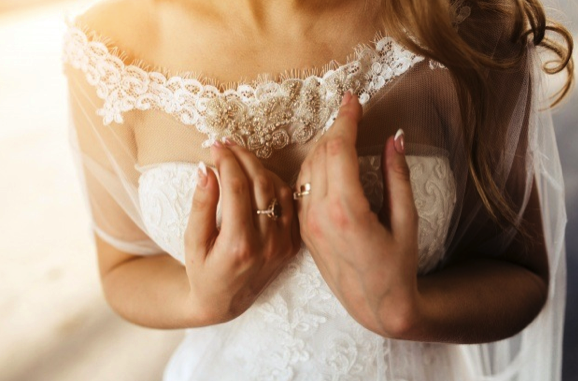When it comes to engagement rings, there is an infinite amount of information out there that can be tough to navigate. We’ve put together some of the most common misconceptions that arise when shopping for the perfect diamond engagement ring to help you with your decision.

Weight is how big the diamond will look.
The diamond’s carat size actually signifies how much the diamond weighs. But, the weight of the stone does not accurately signify how large the stone will look, it is actually down to the cut. This is an important thing to consider when trying to find the perfect ring designed for your needs.
Clarity is the only thing that determines a diamond’s sparkle.
The clarity of the centre diamond actually determines how many imperfections, or even lack of imperfections, are found in the diamond. A flawless diamond will not have imperfections whereas an Included diamond is more likely to have imperfections that are visible to the naked eye. The diamond’s sparkle is really determined by a number of factors, and not just the clarity.
Fluorescence is not a good property for diamonds.
Fluorescence within a diamond is not particularly a bad thing. It really depends on the diamond. For example, an F colour diamond that has a strong blue fluorescence may not exhibit any sort of cloudy or milky effect. There is a wide variety of beautiful diamonds on offer at https://www.simonwestjewellery.com/ that you can check out.
Round diamonds look the biggest.
Round cut diamonds aren’t particularly a diamond shape that will look bigger on your finger. In fact, if they are well cut, they will show off the most brilliance and sparkle due to a number of factors, but these diamonds are perfectly symmetrical all the way around and don’t take up a lot of length on your finger. If you are looking for a diamond that looks larger than it really is, go for an elongated cushion shape, or even pear, oval, marquise, or radiant.
Platinum trumps white gold.
These are really just two options when you want a white-coloured engagement ring. Platinum tends to be heavier, denser, and more malleable, and over time it fades to a grey-matte finish. On the other hand, white gold is much lighter, the metal is shinier, and the metal is overall a little tougher. Over time, white gold will show a hint of yellow tones.
Your engagement ring and wedding band must match.
There really is no rule of thumb as to how your wedding band and engagement ring should look. You can experiment with different styles and take the bespoke route. For that, you might want to take a look at sites like Durham Rose. That said, some prefer bands that are different metals, thinner, or even have a different texture to their engagement ring. It all depends on the personal choice of the individual.
Diamonds won’t break, chip, or crack – they are indestructible.
This is one of the most common misconceptions. While diamonds do rate at a 10 on the Mohs Scale for hardness which means they are hard and difficult to destroy, that doesn’t mean diamonds cannot break of crack. It is certainly possible to chip or break a diamond when the right amount of pressure is exerted. If that ever happens, then getting in touch with experienced jewelers like those at Nelson Coleman who also provide jewelry repair baltimore services could be your best bet. Their expertise in diamonds could be beneficial in helping you restore your ring to its original condition, or as close to it as possible. While that can definitely save the day, it doesn’t mean that you are careless about your ring. It is important to look after your diamond and continue to treat it as a delicate possession.
Those are common misconceptions about engagement rings. We hope that understanding such misconceptions will help you in finding the right engagement ring for your loved one.

